Air filters are crucial to HVAC systems, and in order to maximize system performance, they must function to full efficiency. They filter the air being circulated to prevent the spread of pathogens or dust.
As filters extract these particles, they can clog up and over time affect the airflow of the whole HVAC system.
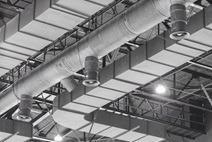
Image Credit: Superior Sensor Technology
To replace today’s air filters in HVAC systems, there are a couple of common practices in place:
- Scheduled replacement (or cleaning) of the air filters at set time intervals. This removes the need to monitor them, but it can also mean replacing filters that are still effectively functioning. Replacing filters before it is needed results in unnecessary business expenses.
- Have physical inspections of each air filter conducted by a technician or maintenance person. This can be both inefficient and inaccurate, as having a person go to each filter to inspect it is an extremely inefficient and costly use of labor. Moreover, visual inspections are subjective and, similar to a time-based approach, may result in the filter being changed before it is necessary.
While replacing air filters too early results in using more filters than needed (an additional cost), not replacing (or cleaning) air filters when required can have more severe consequences, including:
- A lower airflow that can negatively impact the office or factory environment.
- Using greater amounts of energy to restore the airflow to required levels.
- Placing additional wear and tear on the overall HVAC system leading to expensive long-term maintenance and performance problems.
Installing a system that alerts the maintenance crew when is the best time to change or clean air filters not only results in short-term cost savings but also makes sure that your overall HVAC system performs well in the long term.
Specific to air filters, the capacity to accurately measure airflow before and after filtration to establish the effectiveness of the specific filter is key.
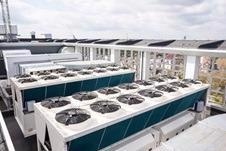
Figure 1. Industrial Grade HVAC System. Image Credit: Superior Sensor Technology
The Role of Differential Pressure Sensors in Air Filtration
Differential pressure sensors are an extremely effective way to measure airflow in front and behind an air filter.
The airflow before the filter, better known as the upstream side, is measured by one port of the sensor. The other sensor port measures the airflow after the filter, known as the downstream side. This is shown in figure 2.
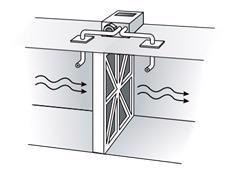
Figure 2. Air Filter with Differential Pressure Sensing System. Image Credit: Superior Sensor Technology
The differential pressure sensor takes the air pressure readings of both ports on the upstream and downstream airflows.
When a pre-determined value in differential air pressure is reached, a notification is sent to alert those monitoring the HVAC system that a replacement or cleaning of the filter is necessary.
This makes sure that the system continues to perform optimally while reducing any premature or unnecessary filter replacements.
However, like all electromechanical systems, differential pressure sensors are susceptible to external factors that can influence performance.
For instance, fans and blowers produce noise and vibrations that can influence the sensor’s accuracy. Filtering out that noise before it reaches the sensing element will significantly improve accuracy.
Another factor to consider when placing sensors in a complex system is that different sections of the ‘air network’ may have varying pressure requirements.
Having one differential pressure sensor that can manage all these different pressure requirements streamlines the system design while guaranteeing steady measures across the HVAC system.
Superior Sensor’s Technology Advantages in Air Filtration
Superior Sensors’ proprietary NimbleSenseTM architecture is the first System-in-a-Sensor integrated platform in the industry.
Combining a highly differentiated state-of-the-art pressure sensing system with the capability to integrate optional building blocks produces the highest accuracy and reliability with features that are application exclusive.
With specialized technology used in Superior Sensor’s HV Series of differential pressure sensors, the company’s products provide numerous advantages for air filter implementations.
Lowest Noise Floor
External noise from blowers, fans and other sources can negatively impact the accuracy and performance of differential pressure sensing systems.
Utilizing Superior’s integrated advanced digital filtering technology, Superior’s pressure sensors eradicate the noise generated by these factors before they reach the sensor sub-system.
By canceling out the noise before it becomes an error signal, these sensors provide the industry’s lowest noise floor.
Highest Levels of Accuracy
Sensor accuracy is crucial for measuring the efficiency of air filters, particularly for those installed in sensitive environments, such as healthcare and precision manufacturing.
Superior’s HV Series of differential pressure sensors possess the industry’s leading accuracy, usually within 0.05% of the selected pressure range. The total error band (TEB) tends to be within 0.15% of FSS and long-term stability within 0.15% of FSS within the first year.
Position Insensitivity
Superior’s unique dual-die implementation with the HV210 offers outstanding benefits for eliminating concerns with sensor orientation and is perfect for handheld pressure sensor measuring devices.
Moreover, it maintains steady, highly accurate readings irrespective of the physical orientation or movement of the differential pressure sensing device.
With a positional sensitivity of 0.25 Pa, the HV210 is an industry leader with respect to position insensitivity.
Multi-RangeTM Technology
Multi-Range technology allows a single sensor to replace many different sensors.
On the HV Series, Multi-Range has the capacity to support up to 8 different pressure ranges in just a single device. Each pressure range is factory calibrated and optimized to make sure there is no degradation in total error band, accuracy or stability irrespective of the range selected.
Figure 3 shows the difference between a conventional differential pressure sensor and Superior Sensor’s HV Series.
With Multi-Range, pressure ranges can be switched ‘on the fly’ so that a single device in the field can serve many purposes.
Multi-Range also allows manufacturers to quickly bring product variants to market, reduces inventory costs, and prevents product obsolescence since only one sensor model needs to be inventoried.
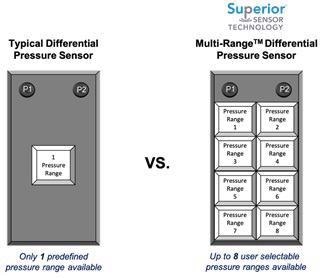
Figure 3. HV Series Multi-Range Technology Comparison. Image Credit: Superior Sensor Technology
Conclusion
HVAC systems gain significant advantages when differential pressure sensors are used to measure the efficiency of air filters. Understanding when is the best time to replace or clean air filters results in both short-term cost savings and also ensures that the overall HVAC system performs well in the long term.
Superior Sensor’s innovative differential pressure sensor technology, based on its proprietary NimbleSense architecture, offers a number of differentiating features that make it the most accurate air filter monitoring system.
For more detailed information about Superior Sensor’s solutions, visit the HV Series product page or contact Superior Sensors today.
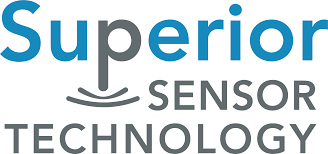
This information has been sourced, reviewed and adapted from materials provided by Superior Sensor Technology.
For more information on this source, please visit Superior Sensor Technology.